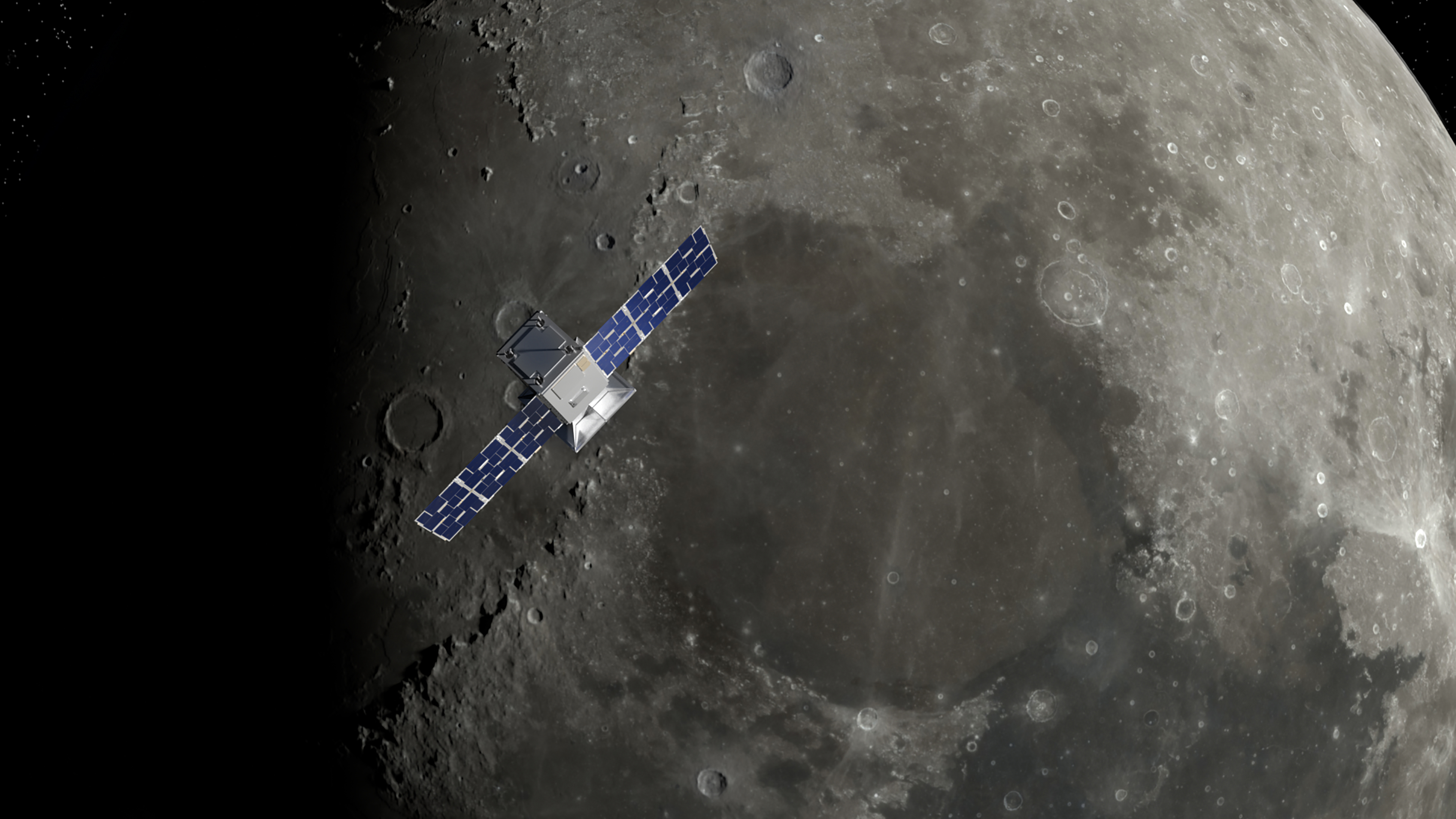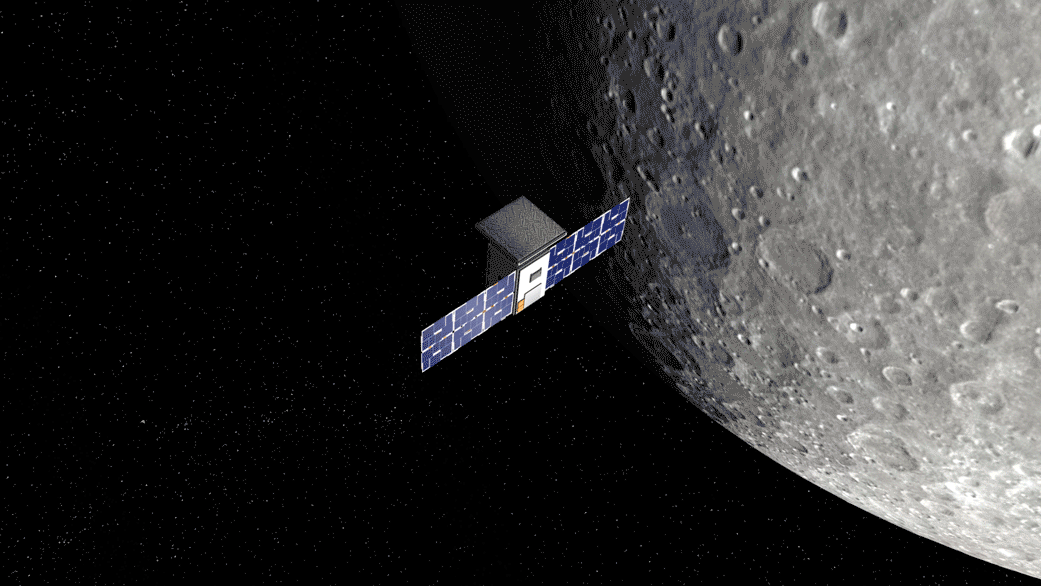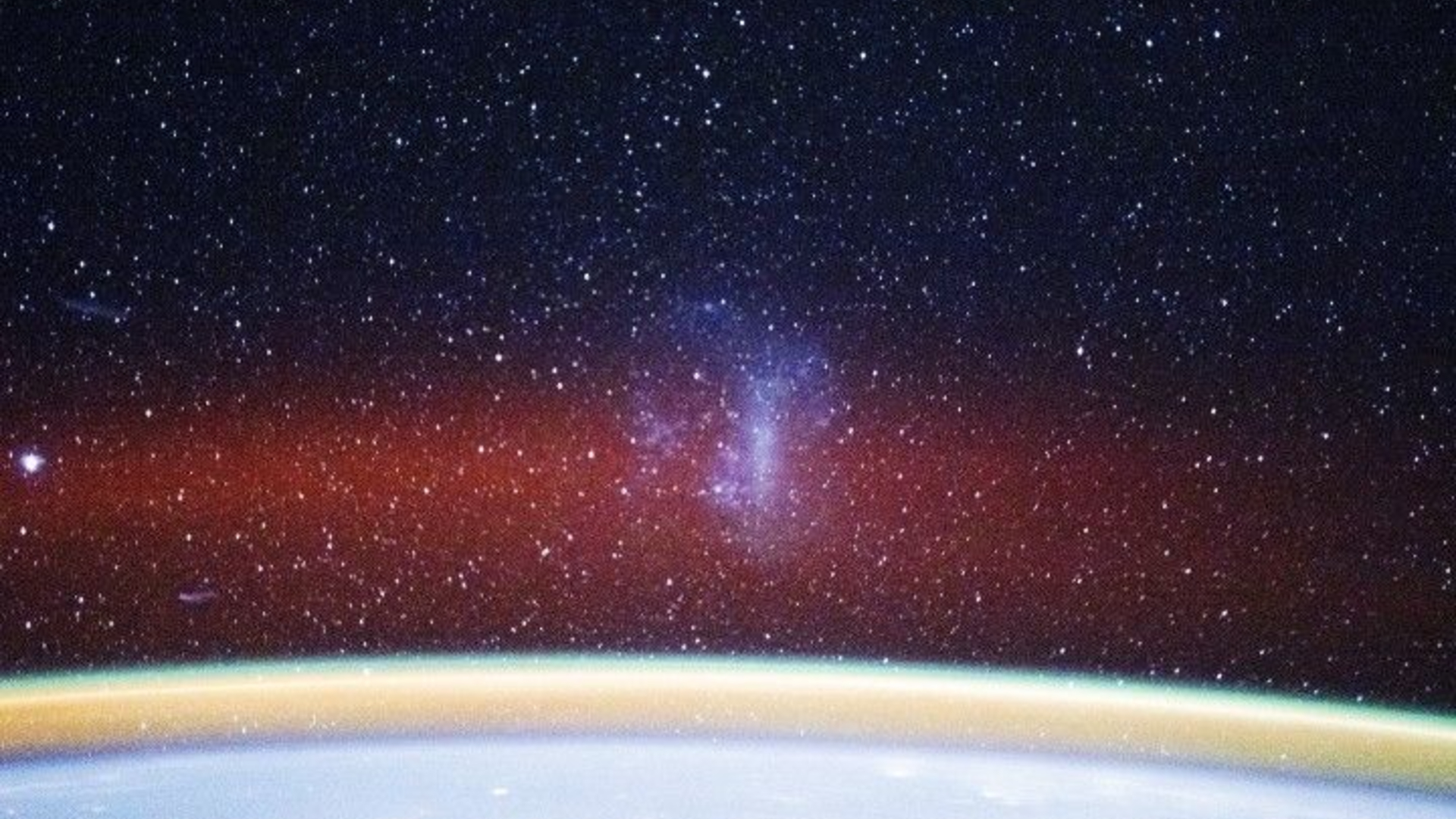NASA's tiny CAPSTONE moon probe gearing up for lunar arrival on Nov. 13

A tiny NASA spacecraft's 4.5-month journey to the moon is nearly over.
The CAPSTONE cubesat, which is about the size of a microwave oven, is scheduled to insert itself into orbit around the moon with an engine burn on Sunday (Nov. 13) at 6:48 p.m. EST (2348 GMT). But it'll likely be a while before we know how that crucial maneuver went.
"The CAPSTONE team expects it will take at least five days to analyze data, perform two clean-up maneuvers and confirm successful insertion into the near rectilinear halo orbit," NASA officials wrote in an update on Wednesday (Nov. 9).
Related: Why it takes NASA's tiny CAPSTONE probe so long to reach the moon
CAPSTONE (short for "Cislunar Autonomous Positioning System Technology Operations and Navigation Experiment") lifted off atop a Rocket Lab Electron booster on June 28, embarking on a route that followed gravitational contours to the moon.
This path is very fuel-efficient but also circuitous, explaining why it's taking the 55-pound (25 kilograms) probe so long to reach its destination.
CAPSTONE's epic journey hasn't been perfectly smooth. For example, the little probe went dark on July 4, shortly after separating from Rocket Lab's Photon spacecraft bus. The CAPSTONE team — led by the Colorado-based company Advanced Space, which owns the probe and operates it for NASA — quickly diagnosed the issue as an improperly formatted command and re-established communications a day later.
Breaking space news, the latest updates on rocket launches, skywatching events and more!
Then, during a trajectory-correcting engine burn on Sept. 8, CAPSTONE experienced a glitch that sent the spacecraft tumbling and put it into a protective safe mode. That problem was more vexing, but the mission team fixed it, and CAPSTONE is now on track for lunar arrival.
"What this CAPSTONE team has overcome to date has been incredible, showing resilience while gaining valuable knowledge," Advanced Space CEO Bradley Cheetham, who's also the CAPSTONE principal investigator, said in the same statement. "Overcoming challenges is the purpose of a pathfinding mission — CAPSTONE is capitalizing on that objective."
As NASA's update mentioned, CAPSTONE is headed for a near rectilinear halo orbit (NRHO) around the moon — a highly elliptical path that will also be occupied by Gateway, a small space station that NASA plans to build as part of its Artemis program.
This type of orbit is thought to be highly stable, but no spacecraft has yet tried one out at the moon. CAPSTONE will be the first, verifying the NRHO's stability and other characteristics, if all goes according to plan.
The little probe will also perform some communication and navigation tests during its time in lunar orbit, which is expected to last at least six months. Some of those trials will be joint efforts with NASA's Lunar Reconnaissance Orbiter, which has been circling the moon since 2009.
Mike Wall is the author of "Out There" (Grand Central Publishing, 2018; illustrated by Karl Tate), a book about the search for alien life. Follow him on Twitter @michaeldwall. Follow us on Twitter @Spacedotcom or Facebook.

Michael Wall is a Senior Space Writer with Space.com and joined the team in 2010. He primarily covers exoplanets, spaceflight and military space, but has been known to dabble in the space art beat. His book about the search for alien life, "Out There," was published on Nov. 13, 2018. Before becoming a science writer, Michael worked as a herpetologist and wildlife biologist. He has a Ph.D. in evolutionary biology from the University of Sydney, Australia, a bachelor's degree from the University of Arizona, and a graduate certificate in science writing from the University of California, Santa Cruz. To find out what his latest project is, you can follow Michael on Twitter.

